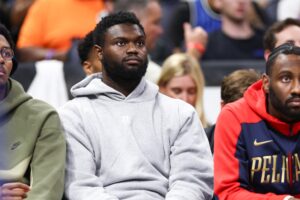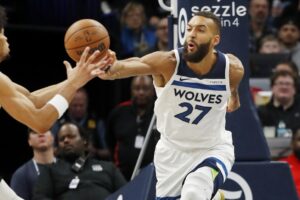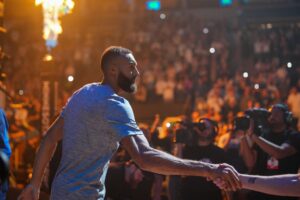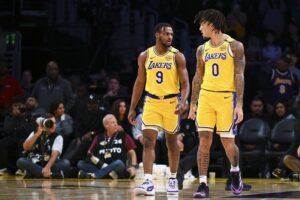In the Detroit Pistons’ offseason, fans had little to be optimistic about. The team finished with the worst record in the league and set a franchise record for losses in a season with 68. Despite having the best odds to receive the No.1 overall pick in consecutive seasons, the Pistons fell to No.5 for the third straight year. The front office faced significant challenges and lacked stability.
Recognizing the need for substantial change, owner Tom Gores took decisive action. After operating for the past four seasons without a president of basketball operations, Gores brought in Trajan Langdon, former assistant GM of the Pelicans, to fill the role. Langdon had a strong track record of identifying and developing overlooked talent, bringing in players like Herb Jones, Jose Alvarado, and Naji Marshall, who exceeded expectations to become legitimate role players. He aims to apply his analytical approach to a Pistons team rich with young talent, though there are questions about the long-term impact of that talent.
How would you rank Langdon’s first offseason as the president of the Pistons? For some, he didn’t have to do much to inspire hope, considering the job Weaver had done. For others, no matter how much he improved the roster, the fan base remained skeptical about any personnel moves. Did Langdon do enough to revive hope in the Motor City? Let’s talk about it.
Grading Every Move of the Pistons Offseason
Trajan Langdon’s Offseason Personnel Decisions With The Pistons
When Trajan Langdon took the job in Detroit, people anticipated substantial changes. One of his first moves was offering Troy Weaver a position in the scouting department, which was declined. Consequently, Langdon decided to part ways with Weaver, which the Pistons fan base approved as a step in the right direction. To strengthen the front office, Langdon brought in Michael Blackstone, the Pelicans’ VP of basketball administration, as his second in command. Additionally, he enlisted JR Holden and Dennis Lindsey to assist with basketball decisions, bolstering the team’s strategic capabilities.
Langdon faced another critical decision regarding head coach Monty Williams. Despite Williams’ six-year, $78.5 million contract, it became apparent that his commitment to the team was waning. Recognizing this, Langdon and owner Tom Gores decided it was in the organization’s best interest to part ways with Williams. They appointed J.B. Bickerstaff as the new head coach to lead the team forward, bringing in shooting guru Fred Vinson to improve the team’s shooting abilities.
These moves marked an excellent start in rebuilding the Pistons’ culture, setting a new direction focused on stability and development.
Grade: A
Trajan Langdon’s Drafting Decisions
The Pistons faced several options in a draft that wasn’t considered the most significant class. They could either use the pick or trade it for more draft capital. Langdon kept the pick and selected Ron Holland with the fifth overall pick. Holland is an energetic high riser known for his aggressive scoring and defensive abilities. While his shooting needs improvement, hiring Fred Vinson as a shooting coach is expected to aid his development significantly.
In the second round, the Pistons moved up sixteen slots to select Bobi Klintman. He is a former four-star recruit who played at Wake Forest. After playing just one season with the school, Klintman went on to the Australian league, averaging 9.7 points and 4.8 rebounds over 23 games. He is a terrific perimeter shooter with the size to be a disruptive force on the defensive end. Despite his athleticism and driving ability limitations, Klintman remains an intriguing prospect poised for growth with the Pistons.
Grade: C+
Trajan Langdon’s Offseason Player Decisions
Langdon’s first move was acquiring Mavericks guard Tim Hardaway Jr., who averaged 14.4 points per game last season. Hardaway Jr. was out of the Mavericks’ playoff rotation despite his contributions and sought a change of scenery. Langdon traded for Hardaway Jr., three second-round picks, and Quentin Grimes, adding veteran presence and perimeter shooting to the Pistons.
Next, Langdon turned to free agency with over $50 million in cap space. He signed former Philadelphia 76er Tobias Harris to a two-year, $52 million contract. The deal drew mixed reactions: some praised the veteran addition, while others questioned the financial commitment.
Langdon also signed Malik Beasley to a one-year, $6 million contract. Beasley, known for his elite three-point shooting, is expected to provide a scoring boost off the bench. While his defensive skills are limited, his potential as a dynamic bench scorer is valuable for the team.
In addition, Simone Fontecchio re-signed with the Pistons for two years at $16 million, ensuring continuity and depth. Paul Reed joined the Pistons off waivers from the 76ers, boosting roster depth with his two-year contract.
Grade: B-
Locking Down The Franchise Player
Cade Cunningham signed a rookie max extension worth over $224 million for five years. Despite the Pistons’ 32-106 record during his tenure, Cunningham has consistently demonstrated his potential, averaging 20.0 points, 5.0 rebounds, and 6.5 assists per game on 43% shooting from the field, 33% from beyond the arc, and 85% from the free-throw line. While analysts have questioned whether Cunningham is the player to build around, his recent performances indicate he may soon dispel those doubts. In his last three games, Cunningham averaged 33.7 points, 4.3 rebounds, and 5.7 assists on 47% shooting from the field, 47% from three, and 90% from the line.
Over the past season, Cunningham has showcased his scoring prowess with two games exceeding 40 points, 18 games with 30 or more points, and 42 games with 20 or more points. Additionally, he has demonstrated his playmaking abilities in sixteen games with ten or more assists and 39 games with five or more. He ranks eighth in assist percentage (41.2%), 13th in usage percentage (30.8%), and is among the top 25 in field goal attempts (832).
Grade: A
The Last Word
Trajan Langdon’s first offseason showcased a balanced approach to rebuilding the Detroit Pistons. While some moves received skepticism, the overall direction suggests a positive future. The strategic hires, key acquisitions, and commitment to Cade Cunningham highlight a clear vision for the team. Developing young talent and integrating new additions, this offseason’s foundation is crucial for the Pistons’ future success.






